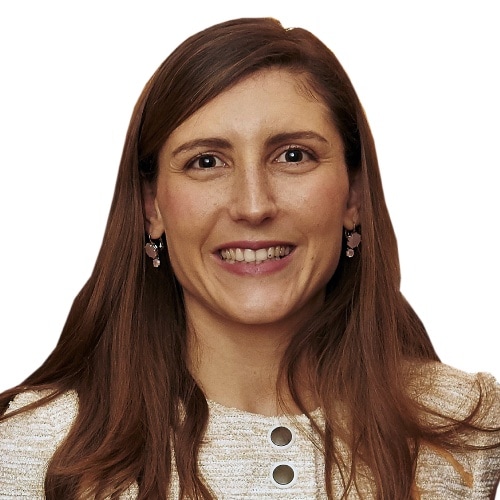{{item.title}}
{{item.text}}

{{item.text}}
Take on Tomorrow, the award-winning podcast from our management publication strategy+business, brings you Episode 7: “What’s the role of tax in tackling climate change?”
Carbon taxation is controversial and can be difficult to implement. But the business world has worked out some ingenious ways to introduce taxation, and there are plenty of reasons to be optimistic about how quickly it could move to cleaner forms of energy. We discuss key concerns about net zero plans and what levers could be pulled next to accelerate the green transition—and what it all means for businesses. In the face of a global energy crisis, new incentives to reduce carbon consumption are on the horizon, and businesses need to be ready for what’s coming.
Lizzie O’Leary
Podcaster and journalist
Ayesha Hazarika
Columnist and former senior political advisor
Danae Kyriakopoulou
Senior Policy Fellow
Grantham Research Institute
London School of Economics
Ian Milborrow
Sustainability and climate change partner, PwC UK
2023 Shorty award winner for "Best Branded Podcast" series
2023 Webby award nominee for "Best Podcast" series
{{item.text}}

{{item.text}}
As reinvention pressure rises, CEOs need to rewire their decision-making.
Sharp, actionable insights curated to help global leaders build trust and deliver sustained outcomes. Explore our latest content on the global issues affecting organisations today from ESG to value creation, technology and cyber to workforce transformation.
Danae Kyriakopoulou: Climate change is the biggest challenge that our economies, our societies, our planet is facing. And climate-related risks are financial risks—are risks for our economies and for our financial system.
Ian Milborrow: Generally, we try and change the behaviours about the production or consumption of that particular item. So, we’re trying to move to a better allocation of resources and shifting that burden of obligation onto the people who are causing the problem.
Lizzie O’Leary: From PwC’s management publication strategy and business, this is Take on Tomorrow, the podcast that brings together experts from around the globe to figure out what business could and should be doing to tackle some of the biggest challenges we face.
I’m Lizzie O’Leary, a journalist in New York.
Ayesha Hazarika: And I’m Ayesha Hazarika, a columnist and, in a former life, a senior political advisor in London.
In this episode, we’ll be exploring a tool that could—and does—motivate businesses to curb their carbon dioxide emissions and help fight climate change. With us is Danae Kyriakopoulou, who we heard from at the start. She works at the Grantham Research Institute. She’ll talk about the role carbon taxes play today and what to expect for the future.
Lizzie: Carbon taxes and green tax incentives are increasingly influencing decisions business makes—whether they are applied directly or through the form of carbon markets.
Joining us now is Ian Milborrow, a sustainability and climate change partner with PwC UK, an economist by training, and advises clients on net-zero strategy and business transformation, and the design and delivery of climate finance initiatives.
Ian, welcome to the show.
Ian: Lizzie, Ayesha, good afternoon. Nice to talk to you today.
Ayesha: Now, Ian, in very simple terms, what is the point of attaching a price to carbon?
Ian: Well, Ayesha—a price to carbon—if you put a price on something, generally, we try and change the behaviours about the production or consumption of that particular item. So, we’re trying to move to a better allocation of resources and shifting that burden of obligation onto the people who are causing the problem.
Ayesha: We’re going to get into more detail in a few minutes. But just explain it in simple terms—what exactly are carbon markets?
Ian: So, generally, I think about carbon markets in three forms, really.
First, there are regulated emissions trading systems, where the quantity of carbon is specified, and the market determines the price. Seen lots of examples of those across the world.
Secondly, there are carbon taxes, where a price is attached to a unit of carbon—and supply and demand determines the outcome.
And thirdly, there are carbon offsets, which are a slightly different concept—whereby you are rewarded in the form of a carbon credit if you undertake an activity that’s better than what would’ve happened otherwise.
Lizzie: Ian, we’re going to hear your views on how business should approach carbon taxes and carbon markets. But first, we’re going to go to Danae Kyriakopoulou.
Ayesha, you spoke to Danae, who is a Senior Policy Fellow at the Grantham Research Institute on Climate Change and the Environment at the London School of Economics.
Ayesha: Yes, so Danae told me that the Grantham Research Institute is focused on a wide range of policy related to climate change and the environment. Here’s how she explained the kinds of questions she works on.
Danae: I’m an economist. And I look at the intersections between climate change, economic policy, economic development, and international finance and the financial system.
So, how does climate change affect the economy? What can economic policy do to support action towards addressing climate change? How can we reform our financial system? What can banks, central banks, financial regulators do to address climate change?
Ayesha: Carbon pricing is about polluters paying their fair share for what they’re doing. And how successful do you think carbon pricing is?
Danae: It creates economic incentives. We have loads of examples of countries that have put in place carbon prices. It creates this incentive by making the polluter pay but also incentivizing them to shift to cleaner forms of production, and also to consumers to shift their consumption, to reduce energy consumption, for example. It creates these incentives to adjust our behavior.
Ayesha: And can you give us any examples of countries in which carbon pricing has worked effectively, or sectors in which carbon pricing has worked well?
Danae: So, in terms of which sectors are most affected by carbon pricing, it’s primarily energy. It creates incentives to change the energy mix, from dirtier sources of energy to cleaner sources of energy. The transport sector, also, in terms of incentivizing—shifting away from vehicles that burn dirty fuels to electric vehicles. But, also, industrial sectors as well, who have energy-intensive and emissions-intensive sectors.
And then, in countries, carbon prices are fairly widespread. There is a total of 68 carbon pricing initiatives globally—and that includes 46 countries and 36 subregional, subnational jurisdictions.
And there is quite a variation in terms of the carbon price. So that is also quite important, and it can vary from as low as below $10 per ton, in countries like South Africa or Mexico, to the bulk of countries which are around $20 to $50, let’s say. That includes the G7 countries that have a carbon price—like the UK or Canada—to over a $100 in even some countries like Switzerland or Lichtenstein. And the highest of all is in Sweden, which is 1,200 kroner in the Swedish currency, which is around $115.
Ayesha: Now, let’s move on to looking at the differences between a straight carbon tax and an emissions trading system. Just explain to us what those two things are and why they’re different—and what works best in your estimation.
Danae: So, both of these two are explicit carbon-pricing instruments, or mechanisms. There can also be implicit ones; for example, you can subsidize cleaner forms of energy and, in that way, indirectly raise the price of the dirtier forms.
But both carbon taxes and emission trading systems or schemes, ETSs, are explicit carbon-pricing measures. The difference is that, in the case of a carbon tax, the government determines the price of carbon, and the market then determines the quantity of emission reductions by setting the price. In the case of ETS, it’s the other way around.
There is two types of ETSs, actually. The most common is the cap-and-trade system, which applies a cap on the total quantity of emissions. And then there is trading in the market that determines the price.
Ayesha: And why is it that a lot of pro-market economists often favor emissions tradings when they are thinking about how to tackle climate change?
Danae: Climate change is the biggest market failure, because we do not internalize these costs.
And pro-market also means acknowledging these instances where the market does not produce the optimal result and figuring out ways to correct that—figuring out ways to support the market to get to the most efficient outcome.
And ETSs and carbon taxes are a way to support the market in getting to the right place. They create these incentives within the market. It is not an imposition, in terms of the market should do X or Y.
Ayesha: And what do you think are the drawbacks of carbon taxes?
Danae: There is a tendency to think of carbon pricing as a solution, as a silver bullet, as something that will magically solve climate change from one day to the next. And I think it’s dangerous to think in that way. It is a very important ingredient that we must have, but it is not the only thing that we must do.
I think another thing we must be careful about is how do you implement this in a way that does not harm those that are most vulnerable? We want a green transition. We want a transition to an economy that is robust, in terms of the risks of climate change. But, also, we want a just and a fair transition. And there are risks that, if implemented in a way that does not prioritize this, such taxes can be regressive.
Ayesha: And just on that point, in terms of a just transition and carbon pricing, how can you make that as fair as possible?
Danae: So, we must be aware of the impact that such taxes may have on lower-income households.
Of course, when a government imposes such a tax, it also gets the revenue from the taxes. So, there are different ways to use the revenue, to support those households that are most affected by the taxes, and also those that are most affected by climate change as well—those that are most vulnerable and exposed.
So, there are various tools that we can use. For example, using this tax revenue to subsidize energy-efficiency improvements, so that households reduce their demand for energy in the first place. Or incentivise and subsidize the shift to electric vehicles, for example.
Ayesha: What is carbon leakage, and how do we deal with it?
Danae: Yeah, so we are in a world where, because of globalization, there is very strong trade links across countries.
We’re also in a world where different countries have different speeds in terms of their climate ambitions, and in terms of their climate actions. And that creates differences and distinctions. Because if country X has a carbon price of 80, let’s say, and another country has a carbon price of 10, that creates differences in terms of how their businesses adapt to that. So, businesses in one country will be subject to more strict environmental regulations than businesses in another country.
That creates competitiveness issues. It creates incentives for countries to outsource production of energy-intensive and emissions-intensive activity to countries where environmental regulations are not very strict.
That is not what we want, because, as a planet, we simply shift the problem somewhere else—we do not get rid of the emissions. That is the risk of carbon leakage. And countries that have a high level of ambition want to avoid that their own businesses are less competitive as a result.
Ayesha: And could you describe some of the ways that these countries are dealing with carbon leakage?
Danae: So, a very direct way to deal with that is border adjustment mechanisms. So, this means, for example, the EU is now considering the so-called CBAM—the Carbon Border Adjustment Mechanism—as a complement to its climate ambition. It says European firms shouldn’t be subject to these regulations and not be able to compete with firms in third countries that are not.
So, what we are going to do is, we are going to adjust at the border—we’re going to put an extra tax on emissions on carbon embodied in imports. That creates risks of retaliation—there are legal issues with the World Trade Organization that need to be dealt with. So, it becomes complicated.
But it is possible. The EU has been doing this—it’s now in the process of finalizing this—but it’s clearly not something that we want there for the long term.
Ayesha: Is there a chance that carbon leakage may even result in mini trade wars? Or there might be retaliations or tariffs imposed on countries that are not doing enough?
Danae: That is what these carbon border adjustment mechanisms are designed also to protect from—to make sure that there is a level playing field.
What we want, ideally, is that there is some convergence in terms of the level of ambition, so that you do not need these carbon border adjustment mechanisms in the first place.
Now, that is difficult, because not every country is at the same starting point. And we need to account for this—we cannot expect countries that are at a much earlier stage of development to be able to move as quickly as those who have already industrialized.
But there are efforts to align this ambition. And what is important there is that we do not want to simply have convergence, in terms of ambition, at the lowest level. We want to have convergence, but also accelerate—also have higher ambition.
Ayesha: And, Danae, talk to us about an interesting program called Fit for 55.
Danae: So, the EU has committed to net zero, to climate neutrality, by 2050. And to get there, it has committed to more than halving its emissions by 2030. So, the Fit for 55 is this plan for the green transition.
And it includes a lot of legislative changes in terms of the energy, transport, industrial sectors across the European Union. And, as part of this, there is also plans for the carbon price and the carbon border adjustment mechanism—and how to support the industries that will be subject to these stricter environmental regulations and climate laws.
Ayesha: There’s a lot of big things to get our heads around. Many of us are living this in our day-to-day lives—we’re seeing this happen in real time. What is the good news that you have for us? And, tell us the things that you are optimistic about in terms of the policy tools that we have—and things like the impact of carbon pricing when it’s done properly.
Danae: Yes, you’re asking an economist to be optimistic, but I will try!
I think the science gives us optimism. There’s been a lot of progress in terms of our ability to move to cleaner forms of energy, to have more energy-efficient infrastructure, homes, buildings, vehicles. You’ve seen countries where the shift to electric vehicles has been very, very fast—in Norway, for example. You’ve seen the shift away from coal in the UK—very, very fast, again. So, I think these examples, that show that change is possible quickly, give us hope.
I think the second thing that gives hope is, private finance really now realizing that this is something that matters to them—it’s not just window dressing, it’s not just a reputational issue—it’s something that matters for their portfolios. If you’re a bank and you’ve given a loan for someone to buy a house that is now more vulnerable to a flood risk, or to a fire, that affects you in terms of the risk you’ve taken on as a bank. So, it’s a material financial risk, and there is that strong realization now that they must care about it—and address it.
And I think the third is, younger generations. I work at a university—at the London School of Economics. There is a lot of energy and momentum in terms of younger generations. It affects our generations as well. But, for them, it’s very, very, very intense—and much more existential, that realization that we have to act on climate. And that trickles down to voters, to policymakers, to responding to that pressure. And I think that’s a very big driver as well, in terms of a more positive future.
Ayesha: Well, Danae, it’s been absolutely fascinating speaking with you. You’ve got such knowledge and expertise on these issues—and really interesting to get your global perspective as well. Thank you so much for coming on Take on Tomorrow.
Danae: Thank you very much for having me.
Lizzie: Joining us again now is Ian Milborrow. Ian, what stood out to you from the conversation between Danae and Ayesha?
Ian: Yes, I think there’s probably three things, Lizzie.
I mean, the first one is coverage. So, I think, as Danae mentioned, we’ve seen the growth of these emissions trading schemes over the last 20 years—and more are being designed. But, even as of now, only 25% of global emissions have a carbon price attached to them. So, there’s still quite a bit of work to be done to embed carbon pricing throughout the global economy.
The second point, I guess I’d call out, is around prices—and what the actual prices of carbon are. You know, in Europe, for example, we’ve seen over the last 12 months an average price of 77 euros per ton. That provides a pretty powerful price signal.
And the third thing I guess I’d say is the intersection with trade that Danae mentioned. So, there’s something called the Carbon Border Adjustment Mechanism that’s being designed here in Europe—and that’s an interesting development. It’s going to cover carbon-intensive products, such as cement and steel, and try to provide a level playing field about how those products are traded with carbon attached to them.
Ayesha: And, Ian, let’s focus a bit on your clients and the people that you advise. What are the most common concerns around carbon taxation that they bring to you?
Ian: Yes, it’s a good question, Ayesha. I think there’s a few concerns. Many of our clients who have ambitious net-zero decarbonisation plans, they probably accept the need for carbon taxes.
But what’s important to them are probably three things: that policies are well designed and consulted upon, so they don’t have unintended consequences; they have a clear policy horizon, so they can plan their business accordingly; and, finally, that they seem to be reasonably equitable and fair and not create distortions in the market.
Lizzie: How should businesses be thinking about carbon markets and the idea that those markets are expanding?
Ian: Sure. So regulated carbon markets can take a while to design, and they often get fine-tuned by policymakers once they’re up and running. We’ve seen that in Europe, in California, and New Zealand. And there’s no doubt, Lizzie, that that expansion will happen.
Personally, I’d expect more state-level schemes in the US to come online over the next few years, and that a number of middle-income countries—the likes of Mexico and Colombia—they might see emissions trading regimes over the next few years as well. So, business needs to stay abreast of these developments, particularly if they operate across multiple jurisdictions.
Lizzie: Well, I have a question about the jurisdiction issue. If you have a multinational corporation, and they are thinking about this holistically, it seems very difficult to align your policy if you’re talking about all of these different markets, with different incentives.
Ian: I mean, you’re quite right, Lizzie. And I think a couple of common principles apply. Generally, I think it collapses to strategic decisions about how they are informed in the design, the consultation of those schemes. And then once those schemes go live and, ideally a bit before, think about the implications through the business, in terms of operational decisions and longer-term capital allocation. That’s what most of our clients, how they’d approach the issue.
Ayesha: Now, Ian, carbon markets are pretty complicated. And you are talking about compulsory carbon markets. How do they differ from voluntary carbon markets?
Ian: Sure. So, regulated carbon markets are basically a formal compliance obligation, and companies have to meet various reporting requirements each year.
In contrast, voluntary carbon markets operate within a set of consensus-based standards that govern what activities can happen—and how, in essence, a carbon credit that’s calculated on the basis of what would’ve happened in the absence of a project, are determined—and how are they rewarded.
Now, these voluntary carbon markets have operated for many years, and they’ve been subject to critiques. And there are moves now to really standardize them and put additional safeguards in place.
Lizzie: How successful would you say carbon markets are right now? And, I guess, what needs to happen for them to be better and to work better?
Ian: The jury’s out still, I think. My personal view is they’ve been fairly successful. It’s hard to sometimes disentangle exactly how much they’ve reduced emissions—for example, in the European Union, due to some of the crises of recent times, such as COVID-19 and the Ukraine War—because emissions markets are closely intertwined with energy markets, and that affects the emissions that come out.
But the EU is currently undertaking reforms of its scheme. As Danae mentioned, this Fit for 55 package, it’s going expand that scheme to different sectors of the economy. So, I think it’ll be interesting to see how carbon markets evolve—in the context of the energy security and energy crisis debate we’re having in Europe, and in other parts of the world, just now.
Ayesha: And just to follow up on that, where do you think we are on international coordination of carbon taxes? We had a big gathering of policymakers at COP26 in Glasgow last year—there’s lots of conversations being had—but where are we on this bigger picture of international cooperation?
Ian: I don’t think we’re moving as fast as we could. I think we will see progress. But my personal view is we might see clubs or regions of countries collaborating on carbon prices, rather than a big overarching international agreement.
Ayesha: And look, we’ve very much been focused on the issue of carbon taxation. But clearly, it can only do so much. So, Ian, what sorts of other policy levers can be used by governments, apart from carbon taxes, to accelerate the green transition?
Ian: You’re quite right. We need a broad palette, if you like, of policy instruments to be deployed.
So, perhaps over time we might see a mix of specific carbon taxes and emissions trading regimes, some broader reform to the fiscal base more generally, that spreads the burden of decarbonizing—in effect, to all sectors of the economy and, indeed, to consumers.
But also, government can do a lot with its own purchasing power—how it procures goods and services in its own economies. And we’re seeing moves in many jurisdictions, including the US, to try and do that.
So, a lot of different instruments in the mix. And, hopefully, we’ll get there on a better trajectory in the end.
Ayesha: So, Ian, to wrap up—give us an honest assessment on where you think we are in our ambitions on net zero.
Ian: Sure, Ayesha. I mean, sadly, the data at the moment shows that the world isn’t on a net-zero decarbonisation trajectory at all. So, the pace of change really needs to quicken. And, I think, as we’ve talked about in this discussion, that’s going to come from the role of governments in how they design carbon taxes, emissions trading regimes, and how those policies will gradually expand to different sectors of the economy.
It’s going to require the capital markets to be much more data driven, and thoughtful, in how they allocate capital to businesses that are at the forefront of that decarbonisation journey—and they should be rewarded in terms of superior returns.
And, finally, the onus is upon us and our children to understand the issue. And to try and have choices, both available to us and for us, to take personal accountability for some of our own decisions, such that we can all play our part in getting on that right path.
Ayesha: Well, Ian, it’s been absolutely fascinating speaking with you. Thank you so much for your time.
Ian: Ayesha, Lizzie, thank you for having me today.
Lizzie: That was fascinating. I have long wondered about, kind of, the guts of carbon markets. And I think one of the things that is most interesting to me is how there are so many different ones. And I think if you’re a multinational corporation trying to think about that and harmonize it, it is incredibly difficult right now.
Ayesha: Yes, I completely agree with that. I think my big takeaway from that interview is the complexity around carbon markets—particularly when you look at the international aspect of it and the desire for people to have a level playing field, some fairness, and some certainty in terms of the regulators as well.
Lizzie: Well, that is it for this episode.
Join us next week, when we’ll be asking: is the empowered worker here to stay?
Guest: The shift between employee expectations has already happened. Employees that are in the workforce and prospective employees, their expectations have changed significantly. And I don’t see that shift as a negative. I see actually that as a huge positive. If we can tap into it well, I think it would have really great outcomes for clients, colleagues, and the broader communities.
Ayesha: Take on Tomorrow is brought to you by PwC’s strategy and business. PwC refers to the PwC network and/or one or more of its member firms, each of which is a separate legal entity.
© 2022 PwC. All rights reserved. PwC refers to the PwC network and/or one or more of its member firms, each of which is a separate legal entity. Please see www.pwc.com/structure for further details.
This content is for general information purposes only, and should not be used as a substitute for consultation with professional advisors.







